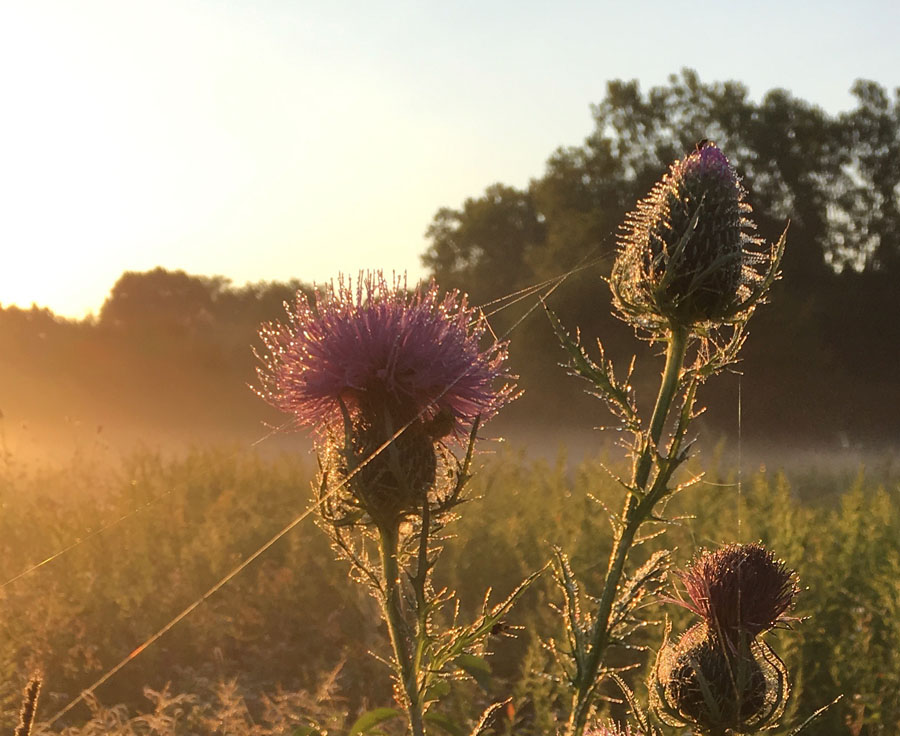“Walk often in drizzly weather, for then the small weeds, covered with rain drops like beads, appear more beautiful than ever. They are equally beautiful when covered with dew, fresh and adorned, almost spirited away, in a robe of dewdrops.”
– Thoreau (The Journal)
Well into August, the pasture thistle has yet to open its buds, as if the flower within takes longer to construct than ordinary flowers. But by September, their purple blossoms are competing with the goldenrod to entertain bumblebees.
On a dewy morning, against the sunrise that will soon disperse the lingering mist, another session of sun-gathering and growth is anticipated. A scene fit for verse:
Prickled thistle, folded tight
You freshly waken from the night
As if the sun you surely knew
Would share its light again with you
Your jealous spines have caught the dew
A spider, too, has worked for you
A thousand lenses burning bright
Will be your dark synthetic sight

With enough of the sun’s generosity, the buds will finally mature, and the flowers open, to attract a multitude of insects. Honey bees, mason bees, wasps, and butterflies, all in various patterns and sizes, find a change of scene from the contrasting goldenrod. These two species are September companions in any Michigan meadow.

“Cnicus pumilus, pasture thistle. How many insects a single one attracts! While you sit by it, bee after bee will visit it, and busy himself probing for honey and loading himself with pollen, regardless of your overshadowing presence. He sees its purple flower from afar, and that use there is in its color.”
– Thoreau (The Journal)

Willing models for photography, both the thistle and the bumblebee embody a patient and thorough nature. As the thistle flowers only in the fullness of time, bees also spend a significant amount of time carefully inspecting every petal for nectar. Despite the size of this ungainly forager, you’re more likely to be stung by the thistle. When a bumblebee buzzes around you, it’s only trying to figure out if you’re a flower or not, and it isn’t fooled easily.
I had considerably more trouble pursuing the idea of a prickly bouquet, to include thistle, teasel, rose, and sedge (which only looks prickly). But it was not to be. Not only do they not bloom together, but the thistle’s jealous spines dissuaded me of the idea at first touch.
Soon I went back to my docile vegetable garden, pondering another of Thoreau’s observations: “The thistle is now in bloom, which every child is eager to clutch, once.”
Article and photos Copyright 2020 by the author.


